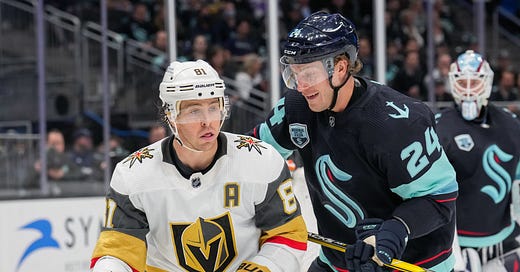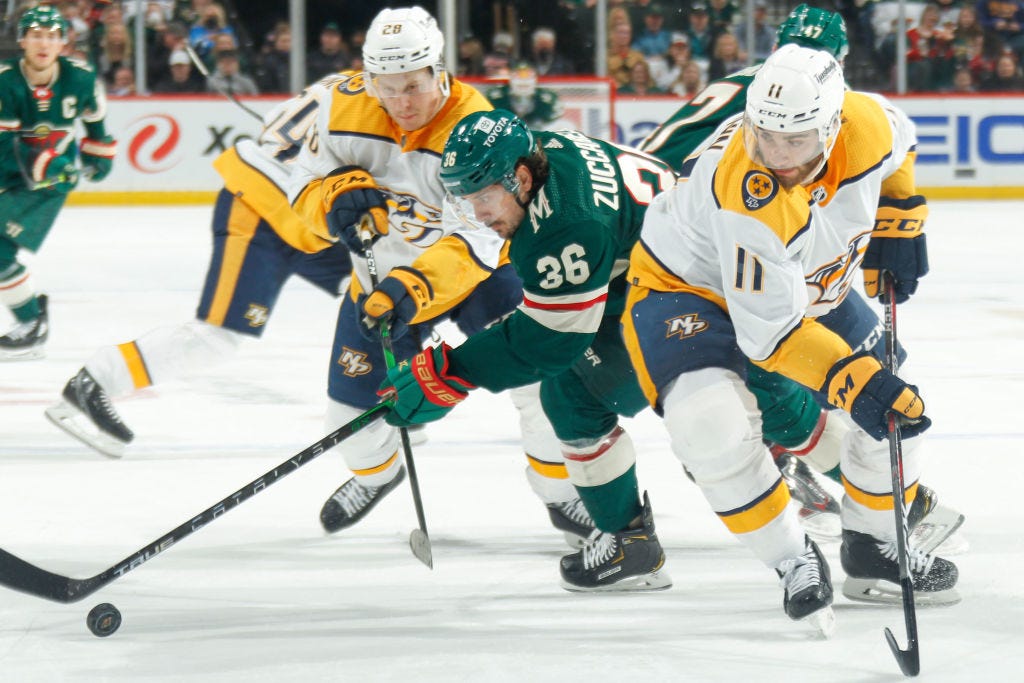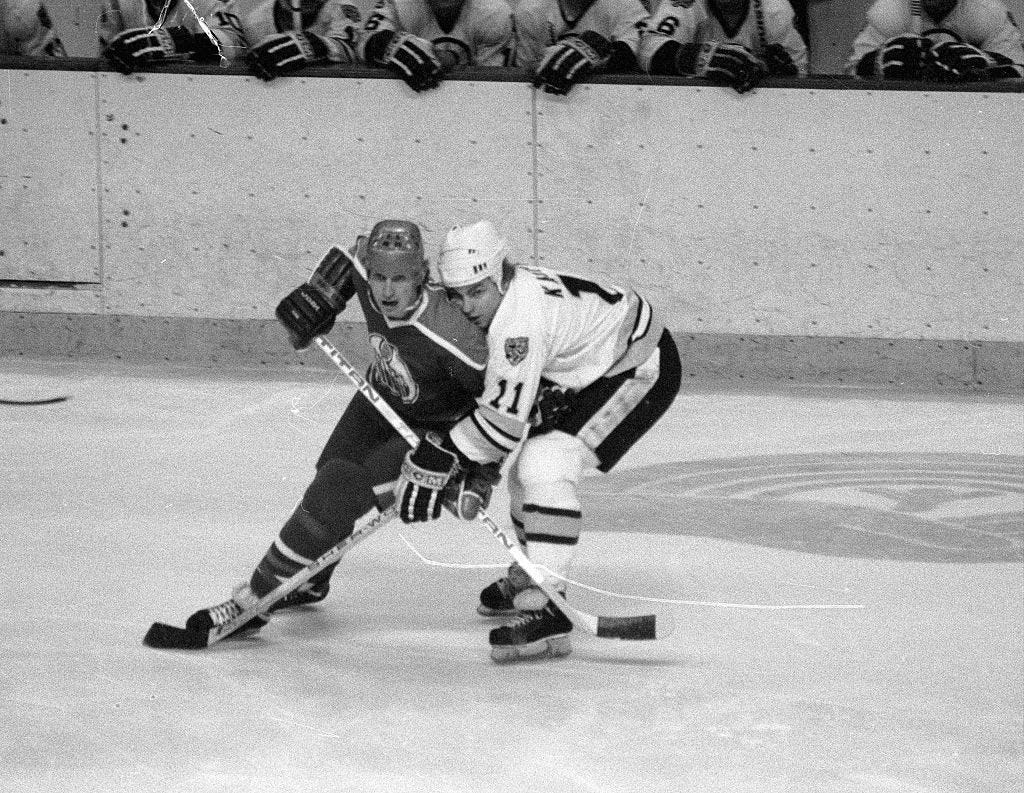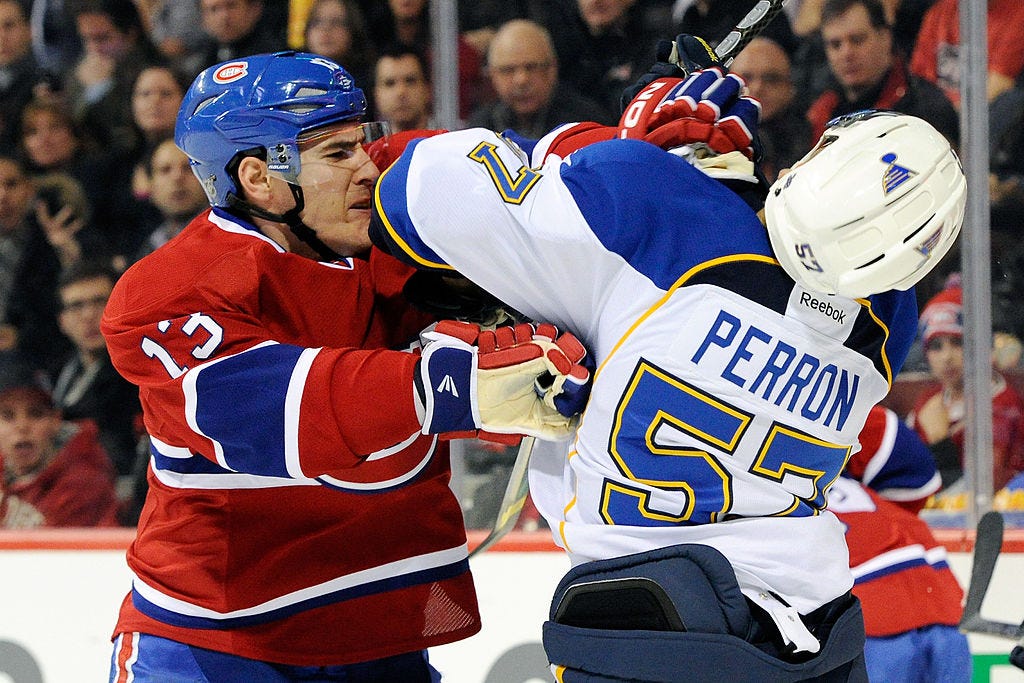Top 50 small men in NHL history (No. 41-50)
Welcome to the first installment of a comprehensive list of the best diminutive players all-time, taking into account the eras in which they played
I’ve told this story many times, but it bears repeating. Back in 1996, the Canadian Hockey League held its first-ever top prospects game and named Bobby Orr as the coach of one of the teams. I thought it was a conflict of interest that Orr, who was an active player agent at the time, had unfettered access to the top prospects for the draft. I called him about it and wrote about it for The Hockey News. When I walked to a media scrum surrounding Orr at the event, he grabbed me in a headlock and said, “You little shit!”
He thought it was hilarious. I thought it was humiliating.
Yeah, I’m small, 5-foot-6 and some pounds. Which is why I have a soft spot for the small men who thrive in this game. So I thought I would come up with a comprehensive list of the top 50 small men to ever play in the NHL. I enlisted a panel consisting of hockey historians Eric Zweig and Bob Duff, former USA Today hockey writer Kevin Allen, TSN senior managing editor Steve Dryden, former hockey card executive Ken Whitmell and myself, who ranked our top 50 small players in order. I also got some valuable input from Scotty Bowman.
But this list is unlike any other one you’re going to see ranking small players. That’s because it was assembled taking into account the height and weight of the average NHL player during the era in which the player played. In order to be eligible to be on this list, at some point in his career the player’s height and weight according to nhl.com (and I realize those can vary by source, but the NHL is the most reliable) had to be at least two inches shorter and 10 pounds lighter than that of the average NHL player.
That’s why you’ll find a 5-foot-10, 177-pound Patrick Kane on this list, but not 5-foot-9, 165-pound Howie Morenz. In reality, Morenz wasn’t much more diminutive than the average NHL player in the 1930s, although he’s considered a small player. In fact, you’re not going to find Marcel Dionne on this list because, even though he was just 5-foot-9, he weighed in at 190 pounds, which was actually almost six pounds heavier than the average player when he broke into the NHL in 1971-72. For the same reasons you won’t find Frank Brimsek, Ray Ferraro, Pat Verbeek or Bob Baun, who highlight most small-men lists, on this one.
Today I highlight Nos. 41-50. I’ll release the list 10 names at a time over the coming weeks. Enjoy.
50. Reggie Fleming
5-foot-8, 170 pounds
The fact that his picture on nhl.com has him wearing a pair of boxing gloves should tell you everything you need to know about Fleming’s game. Yet even though his nickname was ‘Reggie the Ruffian,’ one he definitely came by honestly, he was far more than just a thug. He could play both forward and defense and was regarded as an excellent penalty killer. Fleming was a defenseman for much of his junior and minor pro career, but was made a left winger in the NHL, largely because of his size. With 1,470 career penalty minutes in just 749 games, Fleming led the league in PIM in 1964-65 with 166. A Stanley Cup winner with the Chicago Black Hawks in 1960-61, Fleming was the first known former hockey player to be tested for chronic traumatic encephalopathy when he died in 2009. Researchers at Boston University determined Fleming had the affliction. His family maintained he had at least 10 concussions while playing in the NHL, with others coming in retirement as the result of fist fights and a car accident.
49. Tyler Johnson
5-foot-8, 185
One of the foundational players on a Tampa Bay Lightning team that went on to win back-to-back Stanley Cups, Johnson was never drafted in the NHL and watched as 200 players were taken before him in the Western Hockey League draft in 2005. He went on to become one of the greatest players in Spokane Chiefs history, winning a Memorial Cup in his rookie season. After winning a World Junior Championship gold medal with the United States in 2010, Johnson won a Calder Cup in his first American Hockey League season and led the league in goals and was named MVP in his second. More importantly, he was a key member of winning teams coached by Jon Cooper and was called up to the NHL in 2013, shortly after Cooper took over behind the Lightning bench. He went on to be named to the all-rookie team, and two years later he led all NHL players in goals (13) and tied for the top spot in points (23) in the playoffs.
48. Jared Spurgeon
5-foot-9, 166 pounds
Johnson’s teammate on the Spokane Chiefs team that won the Memorial Cup in 2008, Spurgeon was also a late pick in the WHL, going 188th overall in 2004. Despite being picked in the sixth round by the New York Islanders in 2008, the Islanders didn’t sign him and he ended up joining the Minnesota Wild as an unrestricted free agent in 2010 after playing in the WHL as an overage player. He spent less than half a season in the minors before being called up to the Wild and has been a mainstay on their defense corps ever since. He’s forged a reputation as an excellent two-way defender who logs hard minutes, yet has never accumulated more than 20 PIM in any single season. He was named captain of the Wild prior to the 2020-21 season and has finished in the top five in Lady Byng voting twice, including the ’20-21 season after he had just six PIM in 54 games. He’s a top-20 defenseman and he’s paid like one, with a cap hit of $7.6 million per season.
47. Cliff Ronning
5-foot-8, 165 pounds
Had so many people not been dismissive of him because of his size, or had the St. Louis Blues not basically given up on him, there’s a chance Cliff Ronning might never have become one of the greatest Vancouver Canucks of all-time. Both those factors drove him to be the player he became. Regardless of the eye-popping numbers he put up in junior hockey, he had to find a home with the Canadian national team for two seasons. After three years of basically being a power-play specialist for the Blues, he went to Italy for a year, where he scored 135 points in 42 games and was named MVP of the Italian League. He was finally freed from St. Louis in 1991 when the Blues dealt him to Vancouver in one of the Canucks’ best trades in franchise history. No. 7 had eight 20-goal seasons and seven 60-point seasons in the NHL and was one of the Canucks’ best players in 1993-94 when they came within one win of the Stanley Cup.
46. Jonathan Marchessault
5-foot-9, 184 pounds
An original member of the Vegas ‘Golden Misfits’, Marchessault has become a franchise cornerstone and was an enormous contributor to the Golden Knights being the most successful expansion franchise in the history of professional sports. Taken from the Florida Panthers after a breakout season in which he scored 30 goals, Marchessault took a spot on the left side of a line with William Karlsson and Reilly Smith, a unit that became the top line for the Golden Knights in their march to the Stanley Cup final in 2018. Marchessault scored 75 points in his first year in Vegas and was rewarded with a five-year contract worth $30 million. And he hasn’t disappointed since. He hasn’t matched the output from his first season, but he has been remarkably consistent, posting 20-goal (or equivalent) seasons in each of his first five years in Vegas. In fact, he’s the franchise leader in games played, goals, assists, points, shots, power-play goals and game-winning goals.
45. Mats Zuccarello
5-foot-8, 181 pounds
So, yeah, a 34-year-old undersized guy from Norway who is nicknamed ‘The Hobbit’ is in the top 25 in points per game in the NHL this season. Nothing strange about that, right? Paul Fenton did not do many great things during his short tenure as the GM of the Minnesota Wild, but one of them was signing Zuccarello to a five-year deal worth $30 million just moments after free agency opened in the summer of 2019. Because as good as Zuccarello was for the New York Rangers, he’s been even better for the Wild. He’s averaged a point per game since last season and, playing on a line with Kirill Kaprizov and Ryan Hartman, has been one of the reasons for the Wild’s surprising success in 2021-22. He’s been remarkably consistent over the course of his career and has been a versatile player, combining secondary scoring with an ability to play in all zones.
44. Harry Oliver
5-foot-8, 155 pounds
Nicknamed ‘Speedy’ or ‘Pee Wee’, Oliver forged a Hall of Fame career out of almost nothing. Born either in 1898 or 1900 – according to reports – Oliver didn’t play organized hockey until his teen years when he joined a junior team in Selkirk, Man. But it wasn’t long before he was starring in the Western Canada Hockey League – which was on par with the NHL at the time – before signing with the Boston Bruins in 1926. He hit double digits in goals seven times in the 1920s and ’30s when doing that was considered a significant accomplishment. He led the Bruins in scoring his first three seasons in Boston and helped them win the Stanley Cup in 1929. And he did it cleanly. His career high was 26 PIM and three times he finished with fewer minutes than the player who won the Lady Byng Trophy. He’s also a Hall of Famer. Look it up.
43. Steve Kasper
5-foot-8, 175 pounds
It would be completely unfair to remember Kasper only as Wayne Gretzky’s ghost (see what I did there?), but there’s no doubt a highlight of his resume was his ability to keep the game’s greatest player of all-time in check. The fact is, though, that Kasper was an outstanding two-way player. Winner of the Selke Trophy in 1981-82, he drew high praise, even from the teams he was trying to shut down. “It’s easy to be a checker in this league,” Edmonton Oilers coach-GM Glen Sather once said of Kasper. “It’s a lot tougher to be a complete hockey player.” And Kasper was that. Along with his ability to shadow, he was an excellent playmaker and hit the 20-goal mark four times. He was able to finally stop checking Gretzky when he was traded to the Los Angeles Kings in 1988-89, Gretzky’s first season with the Kings.
42. Steve Sullivan
5-foot-9, 165 pounds
Full disclosure: Sullivan is a personal favorite. He was dazzling people as a minor hockey player in Timmins when I took my first newspaper job at the Timmins Daily Press in the mid-1980s. Before he was drafted, I told an NHL scout that I thought Sullivan could be a 30-goal scorer in the NHL and he laughed at me. Sullivan went on to do it twice. I tried to introduce his father to a prominent agent at the Memorial Cup in 1992 because the family was looking for advice and was quietly asked by the agent to refrain from doing so. For a player of Sullivan’s stature to thrive as an NHL player is not uncommon, but for him to be such a productive player at a time when the NHL was in the midst of the Dead Puck Era when all players were being routinely rubbed out by obstruction is remarkable. He played through debilitating back pain at times and managed to play 1,000 games, finishing just three shy of scoring 750 points.
41. Mike Cammalleri
5-foot-9, 185 pounds
Full disclosure: Another personal favorite. From the time Cammalleri fast-tracked through high school so he could start his college career at the University of Michigan a year early, Cammalleri was always a high achiever. After being passed over in the 2000 draft, Cammalleri went in the second round to the Los Angeles Kings the next summer. He ended up registering 80-point seasons with the Los Angeles Kings and Calgary Flames, and in the spring of 2010 he scored 13 goals to help lead the Montreal Canadiens to the Eastern Conference final. He registered six 20-goal seasons and twice came one short of the mark. He once told me that he could tell among all the players in the NHL who his opponent was just by looking at the pattern of his stick.














